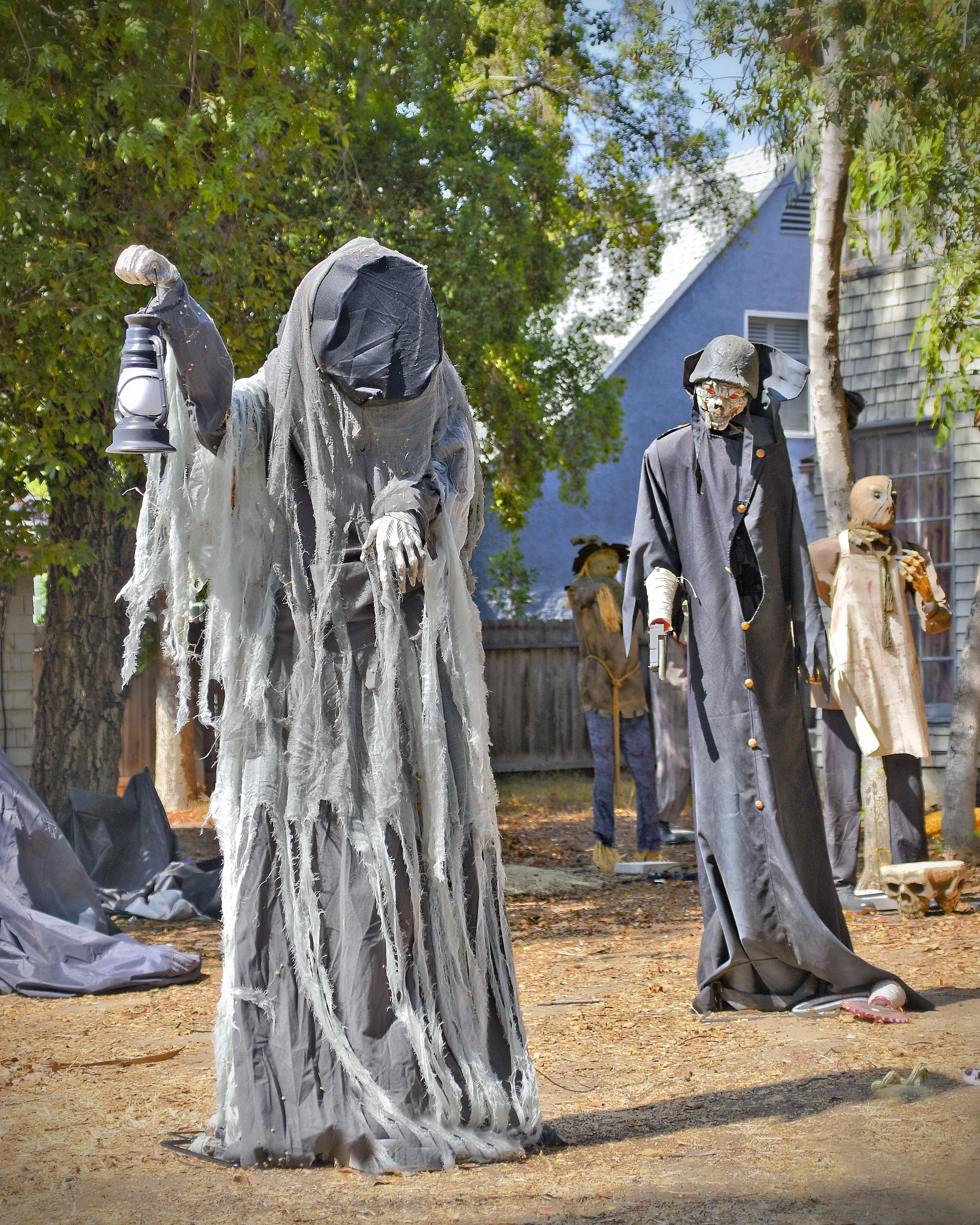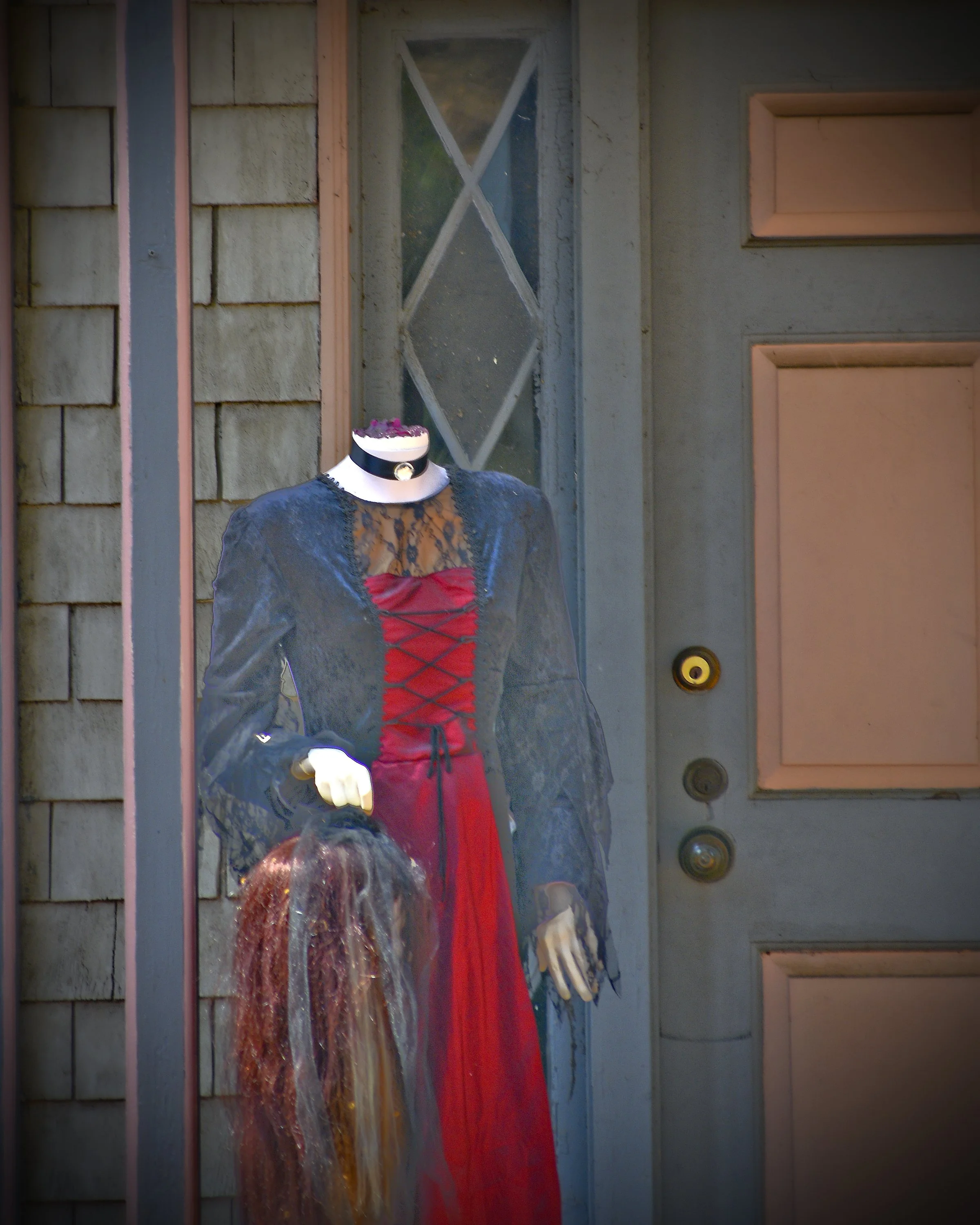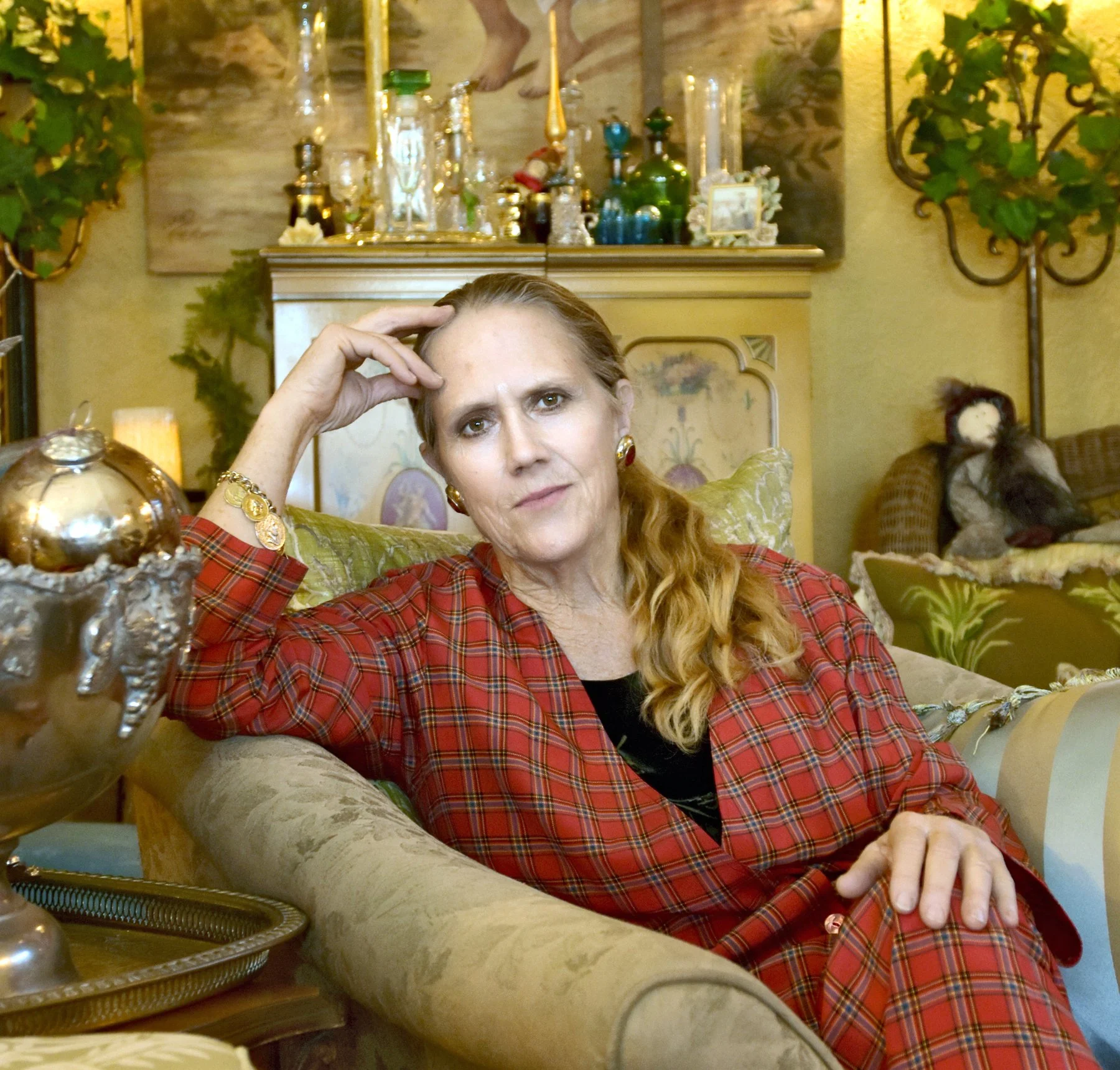It’s Not Safe to Venture Out As Goblins and Witches Are All About On HALLOWE’EN By Photographer and Contributor Simie Seaman
Halloween is an annual holiday observed on October 31, primarily in Canada, Ireland, Scotland and the United States. It has roots in the Celtic festival of “Samhain” and the Christian holiday All Saints’ Day, but is today largely a secular celebration.
Common Halloween activities include trick-or-treating, wearing costumes and attending costume parties, carving jack-o’-lanterns, ghost tours, bonfires, apple bobbing, visiting haunted attractions, committing pranks, telling ghost stories or other frightening tales, and watching horror films.
The carving of pumpkins is one activity commonly associated with Halloween in North America where large pumpkins are readily available. Many families that celebrate Halloween carve a pumpkin into a frightening or comical face and place it on their doorstep after dark.
The imagery of Halloween is derived from many sources, including national customs, works of Gothic and horror literature (such as the novels Frankenstein and Dracula), and classic horror films (such as Frankenstein and The Mummy). Elements of the autumn season, such as pumpkins, corn husks, and scarecrows, are also prevalent. Homes are often decorated with these types of symbols around Halloween.
Halloween imagery includes themes of death, evil, and the occult, magic, or mythical monsters. Traditional characters include ghosts, witches, skeletons, vampires, werewolves, demons, bats, spiders, and black cats. Black and orange are the traditional Halloween colors and represent the darkness of night and the color of bonfires, autumn leaves, and jack-o’-lanterns.
Trick-or-treating is a customary celebration for children on Halloween. Children go in costume from house to house, asking for treats such as candy or sometimes money, with the question, “Trick or treat?” The word “trick” refers to a (mostly idle) “threat” to perform mischief on the homeowners or their property if no treat is given.
Costuming is another custom associated with Halloween. Halloween costumes are traditionally modeled after monsters such as ghosts, skeletons, witches, and devils. Over time, the costume selection extended to include popular characters from fiction, celebrities, and generic archetypes such as ninjas and princesses.
What sets Halloween costumes apart from costumes for other celebrations or days of dressing up is that they are often designed to imitate supernatural and scary beings. Costumes are traditionally those of monsters such as vampires, ghosts, skeletons, witches, and devils, or in more recent years such science fiction-inspired characters as aliens and superheroes. There are also costumes of pop culture figures like presidents, athletes, celebrities, or film, television, and cartoon characters.
Families and friends may gather together for a Halloween party. There are several games traditionally associated with Halloween parties. One common game is dunking or apple bobbing, in which apples float in a tub or a large basin of water and the participants must use their teeth to remove an apple from the basin.
The telling of ghost stories and viewing of horror films are other common fixtures of Halloween parties. Episodes of television series and Halloween-themed specials (with the specials usually aimed at children) are commonly aired on or before the holiday, while new horror films are often released theatrically before the holiday to take advantage of the atmosphere.
HAPPY AND SAFE HALLOWE’EN!
Bio
Simie Seaman, enthusiast amateur photographer, history buff and collector of beautiful things.
email: thesistersprivatecollection@gmail.com
310-835-8177














